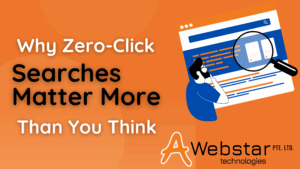
Designing a website can be a challenging task, especially when it comes to creating an interface that is both visually appealing and user-friendly. However, adopting a user-centered Web design approach can help overcome this challenge. By understanding the target audience and conducting thorough research, one can create a website that provides a positive user experience across diverse platforms.
In this blog, we will learn how to design a website for your business and achieve your all goals and targets. Let’s dive in.
Step-by-step Guide on Designing a New Website for Your Business
The following is the complete process of designing a high-quality and professional business website for driving growth and success.
Define your Website’s Purpose and Goals
To create and design a website that helps to achieve the desired results, it is important to clearly define these results. You should think about the purpose of the website and the target audience, as well as the specific goals you want to achieve. For example,
- Providing information to clients.
- Generating leads.
- Highlighting customer feedback.
- Selling products online, and much more.
Additionally, understanding the purpose of the website is useful for developing the right content strategy and for making sound decisions about the platform & page layout. When you are clear about the purpose of the website, you can ensure that it is designed to effectively achieve your goals.
Pick a Domain Name
After deciding the exact purpose of making the new website, you have to pick a domain name. A domain name is the digital address for your website, which makes it easier for people to find you online. It also adds credibility to your business and helps to improve your website’s ranking in search results when chosen carefully. For instance, the domain name for this URL https://www.example.co is an example.co
The following are the pointers to keep in mind while picking a domain name for your website:
- It should be short, relevant to your business, and reflect your brand.
- The domain name must have industry-related keywords to improve your website’s visibility.
- Choose a top-level domain and register with the registrar.
- Consider country-specific domains for example- .co.uk.io, etc.
Select a Reliable Web Hosting Provider
Research and choose a reliable web hosting provider that meets your website’s needs. The following factors, such as:
- Server reliability.
- Customer support.
- Scalability.
- Unlimited email forwarding.
Every website is hosted on popular server options including Bluehost, HostGator, and more, which are placed across the world and accompanying data. This helps users load the website from any location at any time, and you can expect high traffic on the website.
Research and Plan Out Content
The next step is to identify the key content your website will feature. Start researching your competitor’s website and see what attracts you most and create a content plan, including text, images, and multimedia elements accordingly. However, it’s necessary to ensure that the content aligns with your business goals and appeals to your target audience. As the content is the most informative part of the website, it shows what you offer and what you stand for.
Decide on a Layout
Deciding on a layout is an important step in designing a website. It involves planning and organizing the placement of key elements such as the header, navigation menu, content sections, and footer.
When framing the layout of your website, you should consider the overall design aesthetic and the user experience you want to create. The following elements should be considered:
Color Scheme
Choose a colour scheme that matches your brand and creates the same evergreen look throughout the website. So you can convey the right message to your audience that you want to share.
Typography
Select fonts that are easy to read. Use a consistent font hierarchy for headers, subheadings, and body text.
Imagery
Choose high-quality images and graphics that are relevant to your content and enhance the overall website design.
Add Relevant Pages
Create essential pages for your website:
Home Page
The initial page visitors see when they come to your business website. It should include your logo, business name, a summary of what your website offers, and an easy-to-use navigation menu.
Service Page
This page should provide information about the services you offer and allow visitors to make a purchase. For e-commerce sites, there should be a page for displaying your catalogue and another for showing individual items in detail.
About Page
This page introduces visitors to your brand, tells your storyline, communicates your values, and highlights what sets you apart from other brands.
Blog Page
If you plan to use blogging as a content marketing strategy, this page will display a brief extract of your published blog posts, allowing users to click on ones that interest them.
Contact Page
This page provides visitors with information on how to reach you, such as phone numbers, email addresses, and social media platforms. You can also include your location address, a live chat widget option, and an online contact form link.
Choose a Professional Website Builder
Once you have identified the purpose for creating a website, you can explore different website-building tools. These tools help businesses to create a professional website in the fastest way without knowing coding. The following is a list of some robust website builders:
- Shopify.
- Wix.
- WordPress.
Testing and Publish your Website
Creating a website for your business is the first thing you need to do to establish an online presence. It’s important to test your site thoroughly to make sure that all the content loads correctly and that all the hyperlinks work. You should also check the user experience to make sure that your products and services are displayed the way you want them to be. Once you are satisfied with the testing, you can live your business website to drive growth and success.
Conclusion
To conclude, for designing a website you must have to follow the basic steps. These steps help you to create a well-designed and functional website that effectively represents your business online.















































